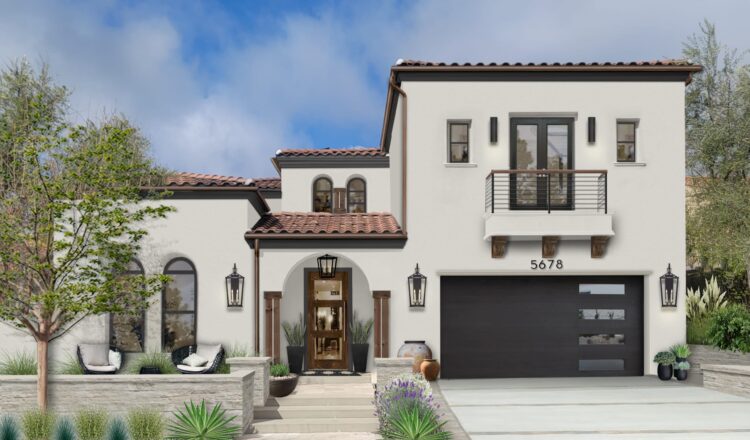The landscaping of Spanish homes features numerous features that typify this style. For example, this style of home features an open fireplace, built with traditional stucco and accented with patterned tiles. The fireplace may be shaped like a rectangle, with blue-colored tiles on the opening and a chimney built with stucco. There may also be a wide hearth to accommodate additional seating. A Spanish landscape design may also include a courtyard, terracotta floor, or Xeriscaping.
Terracotta Floors
In the landscaping of a Spanish home, terracotta floors are often used on exterior surfaces. Because these terracotta tiles can absorb moisture, they might crack during freezing weather. For this reason, you should consider the location of your terracotta floor tile before installing it. If you have a traditional Spanish home, the tiles used for flooring may complement the exterior design of the home. In contrast, if you want to create a contemporary Spanish style, terracotta tile might be the best choice.
Xeriscaping
The xeriscaping of Spanish homes is becoming more popular due to its water-conserving qualities. Instead of relying on water-consuming annual plants, xeriscaping makes use of perennial, shrub, and tree plants. These plants are drought-tolerant and often have a mixture of evergreen and deciduous varieties. This way, the landscaped lawn offers year-round interest.
Stucco Walls
When designing the landscaping for a Spanish home, you may notice a certain characteristic, which is stucco walls. Most homes of this style have solid, clean stucco walls with a red tile roof. Often, these homes also feature a textured white or creamy colored stucco covering other building materials. It is especially vulnerable to water damage. Therefore, proper maintenance of stucco walls is vital for the durability and aesthetics of your home.
Terraces
In the traditional landscaping of Spanish homes, terraces are common in the front garden, side garden, and back garden. These features add beauty to the overall landscape and can be particularly beautiful if they are constructed well and decorated with fine ascents and staircases. There are many types of terraces, which can range from the great Terrace to the side terrace. Typically, a terrace is raised above the level of the garden, and encompasses a whole garden, rather than merely a part of it.
Olive Trees
If you are considering planting olive trees in the landscaping of your Spanish home, you should know that these olives have a long and prestigious history. This type of tree has a wide, gnarled trunk and oblong, silver-green leaves. Experts recommend space between olive trees of 16 to 20 feet. There are dwarf varieties available as well. Olive trees can be planted in fall. To avoid frost damage, choose a location that is not too warm or too cold during the winter.
Mulberry Trees
Many homeowners choose to plant mulberry trees in their landscapes to give their Spanish homes a classic look. Mulberries are small, drupe-like trees with a distinctive flavour. They are firmer than raspberries and have a distinct crunch. This fruit can be squirmy, too. These fruit are often used to make jam, so a good choice for landscaping around Spanish homes.
Fireplaces
For a traditional Spanish-style fireplace, thousands of stone pieces are needed. Thousands of stone pieces are broken down and arranged by manufacturers into a custom design. Experienced masons perform the intricate work of arranging the multitude of stones to provide the best fit and outlook. Once the stone pieces are in place, the fireplace will take on a life of its own. Decorative elements may include wrought iron wall sconces, which add warmth and character to the Spanish-style home.







